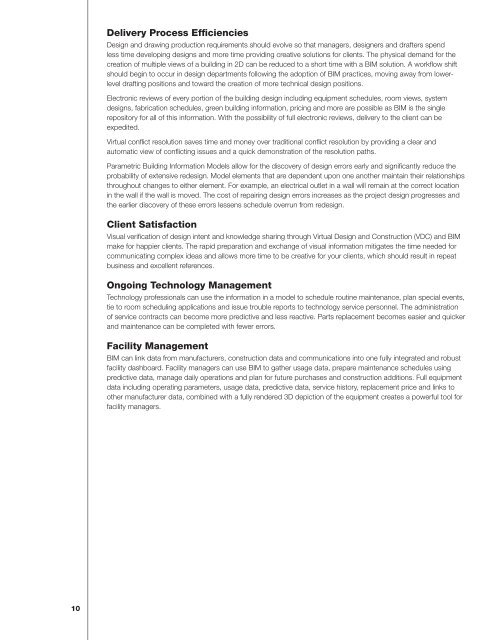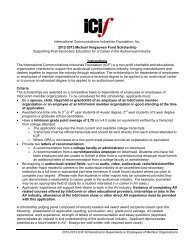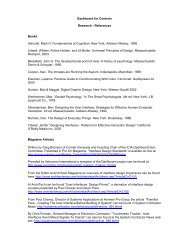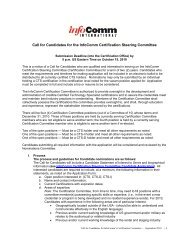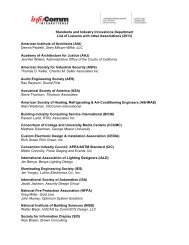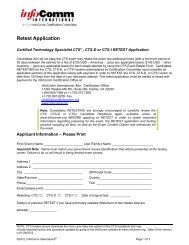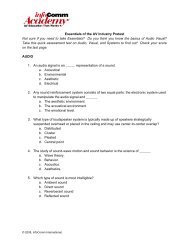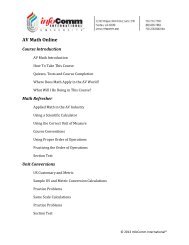Building Information Modeling (BIM) - InfoComm International
Building Information Modeling (BIM) - InfoComm International
Building Information Modeling (BIM) - InfoComm International
Create successful ePaper yourself
Turn your PDF publications into a flip-book with our unique Google optimized e-Paper software.
10<br />
Delivery Process Efficiencies<br />
Design and drawing production requirements should evolve so that managers, designers and drafters spend<br />
less time developing designs and more time providing creative solutions for clients. The physical demand for the<br />
creation of multiple views of a building in 2D can be reduced to a short time with a <strong>BIM</strong> solution. A workflow shift<br />
should begin to occur in design departments following the adoption of <strong>BIM</strong> practices, moving away from lowerlevel<br />
drafting positions and toward the creation of more technical design positions.<br />
Electronic reviews of every portion of the building design including equipment schedules, room views, system<br />
designs, fabrication schedules, green building information, pricing and more are possible as <strong>BIM</strong> is the single<br />
repository for all of this information. With the possibility of full electronic reviews, delivery to the client can be<br />
expedited.<br />
Virtual conflict resolution saves time and money over traditional conflict resolution by providing a clear and<br />
automatic view of conflicting issues and a quick demonstration of the resolution paths.<br />
Parametric <strong>Building</strong> <strong>Information</strong> Models allow for the discovery of design errors early and significantly reduce the<br />
probability of extensive redesign. Model elements that are dependent upon one another maintain their relationships<br />
throughout changes to either element. For example, an electrical outlet in a wall will remain at the correct location<br />
in the wall if the wall is moved. The cost of repairing design errors increases as the project design progresses and<br />
the earlier discovery of these errors lessens schedule overrun from redesign.<br />
Client Satisfaction<br />
Visual verification of design intent and knowledge sharing through Virtual Design and Construction (VDC) and <strong>BIM</strong><br />
make for happier clients. The rapid preparation and exchange of visual information mitigates the time needed for<br />
communicating complex ideas and allows more time to be creative for your clients, which should result in repeat<br />
business and excellent references.<br />
Ongoing Technology Management<br />
Technology professionals can use the information in a model to schedule routine maintenance, plan special events,<br />
tie to room scheduling applications and issue trouble reports to technology service personnel. The administration<br />
of service contracts can become more predictive and less reactive. Parts replacement becomes easier and quicker<br />
and maintenance can be completed with fewer errors.<br />
Facility Management<br />
<strong>BIM</strong> can link data from manufacturers, construction data and communications into one fully integrated and robust<br />
facility dashboard. Facility managers can use <strong>BIM</strong> to gather usage data, prepare maintenance schedules using<br />
predictive data, manage daily operations and plan for future purchases and construction additions. Full equipment<br />
data including operating parameters, usage data, predictive data, service history, replacement price and links to<br />
other manufacturer data, combined with a fully rendered 3D depiction of the equipment creates a powerful tool for<br />
facility managers.


